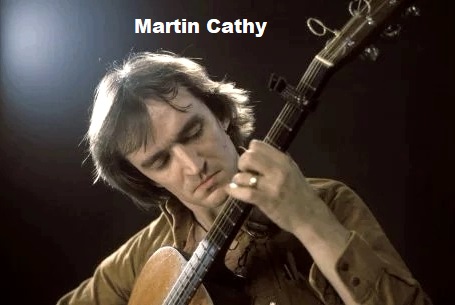 Most of us know that virtually all of Simon & Garfunkel’s hits of the late 60s and early 70s were written by Paul Simon, but did you know one of their very biggest not only wasn’t a Paul Simon composition, but actually counts Art Garfunkel as one of the song’s creators?
Most of us know that virtually all of Simon & Garfunkel’s hits of the late 60s and early 70s were written by Paul Simon, but did you know one of their very biggest not only wasn’t a Paul Simon composition, but actually counts Art Garfunkel as one of the song’s creators?
As a matter of fact, the tune lent its lyrical refrain to the duo’s iconic 3rd album, Parsley, Sage, Rosemary & Thyme. Yep, the tune is one of the pair’s signature songs, “Scarborough Fair/Canticle.”
 The origins of the tune go all the way back to the 50s – the 1250s, that is. That’s when King Henry VIII signed a charter that began the tradition of an annual 45-day fair in the seaside town of Scarborough – running from mid-August through the end of September. In those days, a fair was not at all like the fairs we attend today. Back then, a fair was an enormous open air trading market. It attracted merchants from far and wide who displayed their wares for sale or trade.
The origins of the tune go all the way back to the 50s – the 1250s, that is. That’s when King Henry VIII signed a charter that began the tradition of an annual 45-day fair in the seaside town of Scarborough – running from mid-August through the end of September. In those days, a fair was not at all like the fairs we attend today. Back then, a fair was an enormous open air trading market. It attracted merchants from far and wide who displayed their wares for sale or trade.
The tune that bears the name of the fair arrived sometime around 1300. Obviously, the original author is now unknown. And as was also the tradition of the time, balladeers who sang it often changed the words, added verses or altered the tune as it passed from singer to singer.
 The song tells of a jilted lover who is angry. He or she is telling their former lover that if they desire a reconciliation, there are some things they’ll have to do. Of course, the most obvious is that they must travel to the Scarborough Fair. While there, the singer asks them to perform tasks that are totally impossible – make a shirt with no seams or needlework, find an acre of dry land between the ocean and the shore, reap that land with leather (totally unsuited for such a task) and gather it with heather (a flower small & delicate and not up to being used to bind anything).
The song tells of a jilted lover who is angry. He or she is telling their former lover that if they desire a reconciliation, there are some things they’ll have to do. Of course, the most obvious is that they must travel to the Scarborough Fair. While there, the singer asks them to perform tasks that are totally impossible – make a shirt with no seams or needlework, find an acre of dry land between the ocean and the shore, reap that land with leather (totally unsuited for such a task) and gather it with heather (a flower small & delicate and not up to being used to bind anything).
Basically, it’s tune telling a past love to get lost. The herbs mentioned – the famous parsley, sage, rosemary & thyme, in that bygone era, were all thought to have properties that could heal a broken heart.
Okay, so where does Art Garfunkel come in? When we listen to the tune, there are actually two melodies that entwine during the verses. The first is the English folk ballad, “Scarborough Fair,” the other carries lyrics that are distinctly about war, not love. That second anti-war tune was written by Art Garfunkel in 1963 – first as a song called “The Side of the Hill” and then reworked as “Canticle” to provide the counterpoint to “Scarborough Fair.”
 Paul did have an important part to play. After the pair’s initial album Wednesday Morning, 3 A.M. tanked, Paul relocated to England to see if he could establish a solo career over there. While there in 1965, he was introduced to the folk song “Scarborough Fair” by British singer, Martin Cathy. Cathy also came up with the idea to include “Canticle” as part of the song.
Paul did have an important part to play. After the pair’s initial album Wednesday Morning, 3 A.M. tanked, Paul relocated to England to see if he could establish a solo career over there. While there in 1965, he was introduced to the folk song “Scarborough Fair” by British singer, Martin Cathy. Cathy also came up with the idea to include “Canticle” as part of the song.
Shortly thereafter, a version of Simon’s “Sounds of Silence” with rock instruments added became a huge hit back in the States. Paul quickly returned to reunite with Artie, now as a rock act. While the song was well-received as an album track, it wasn’t until it was used as one of the main themes to Dustin Hoffman’s breakout film, The Graduate that it really became the monster hit that we all know today.